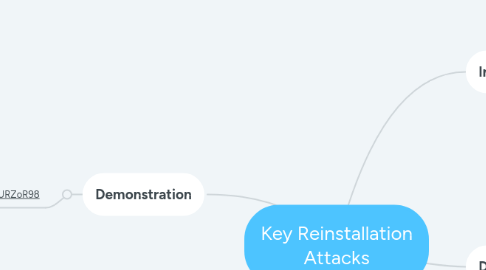Key Reinstallation Attacks
by Jaidith Geraldine Gonzalez Bernal


1. Introduction
1.1. We discovered serious weaknesses in WPA2, a protocol that secures all modern protected Wi-Fi networks.
1.1.1. An attacker within range of a victim can exploit these weaknesses using key reinstallation attacks (KRACKs).
1.1.1.1. Concretely, attackers can use this novel attack technique to read information that was previously assumed to be safely encrypted.
1.1.1.2. This can be abused to steal sensitive information such as credit card numbers, passwords, chat messages, emails, photos, and so on.
1.1.1.3. The attack works against all modern protected Wi-Fi networks.
2. Demonstration
2.1. https://youtu.be/Oh4WURZoR98
2.1.1. In this demonstration, the attacker is able to decrypt all data that the victim transmits.
2.1.2. For an attacker this is easy to accomplish, because our key reinstallation attack is exceptionally devastating against Linux and Android 6.0 or higher
